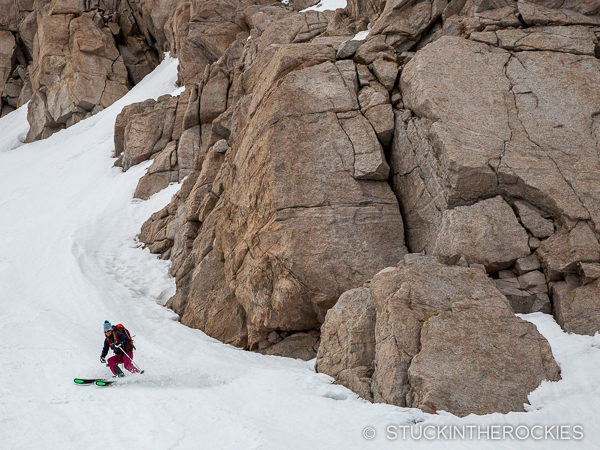
Skiing Mount Langley’s Northeast Couloir.
Follow the snow, that was the idea. California and the Sierra Nevada Mountains just experienced one of their biggest winters in recent history. So when it came time to decide on where to go ski adventuring this spring it was an obvious choice. We were excited. Only once before had I skied in the Sierras, some 17 years ago, and this was Christy’s first visit to these mountains.
The Sierras are a huge mountain range and offer more than a lifetime of options for backcountry skiing and ski mountaineering. Since we didn’t have time to see everything, we chose to focus on the southern part of a region referred to as the Eastern Sierra. This area contains most of California’s dozen or so 14ers, and countless other summits in the 13K range.
We started near the town of Lone Pine. Our first objective was Mount Langley, 14,042 ft., the southernmost 14er in the state.
There are several differences between California and Colorado 14ers. The geology, the topography, the local flora/fauna are a few them. But one difference a ski mountaineer will notice right away is the starting elevation of the trailheads. They’re considerably lower than what we have in Colorado and as a result, 14er skiing is generally tougher in the Sierras since the days have so much more vertical.
It’s quite common to start up a trail to a Sierra 14er at or near an elevation of 7,000 feet. In some cases it’s even lower. When we began up Mount Langley we drove as high as the road would take us, and when we got ready to start we set our altimeters to the trailhead elevation– 6,900 feet. That’s pretty low.
Not only is it a lot of vertical to get to 14,000 feet, but it’s also a lot warmer at the lower elevations and the snow can be melted for the first couple thousand feet. Skiing 14ers in California in May will usually involve a predawn start by headlamp, with skis and boots racked on your backpack. It doesn’t take long to realize it’s going to be a long day.
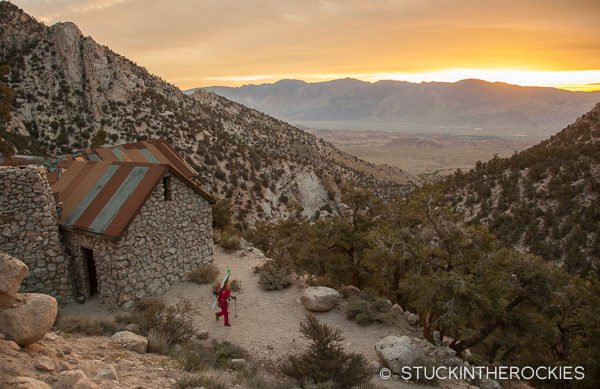
We followed Tuttle Creek to access the mountain. On this approach you’ll encounter the Tuttle Creek Ashram, an old stone spiritual place of enlightenment that was built almost a century ago.
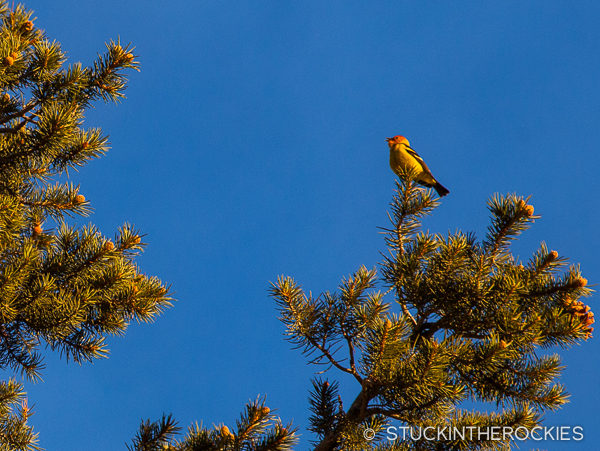
One of the local residents we encountered as the sun rose, the Great Western Tanager, our spirit animal for the day.
Eventually you settle into your groove and enjoy the cruise up a dry trail to snowline. On Mount Langley that was around 9,300 feet. We switched to our ski boots, stashed our trail shoes in a tree and began skinning.
In short time we were above 10K, cruising through enormous limber pines, approaching the long Northeast Couloir. It was a big one, almost 2000 vertical feet from bottom to top. We skinned up it a bit and eventually switched to crampons, and followed the granite-walled couloir to its top. From there the route continued higher on a final summit pitch that probably neared 50 degrees in angle.
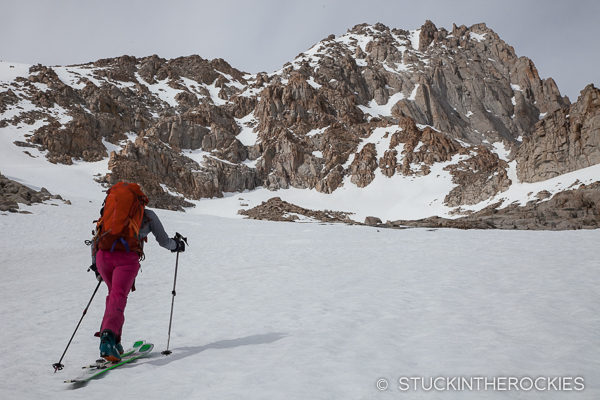
Approaching Mount Langley, the Northeast Couloir drops off the summit to the left, and is recessed into the rock in this photo.
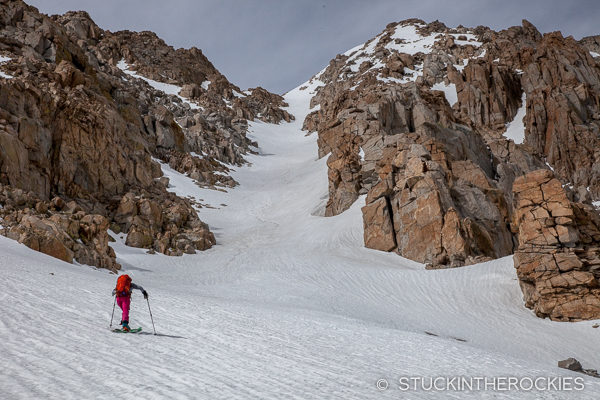
At around 11,000 feet the full couloir comes into view. It may not look it, but it’s 2,000 vertical feet to its top.
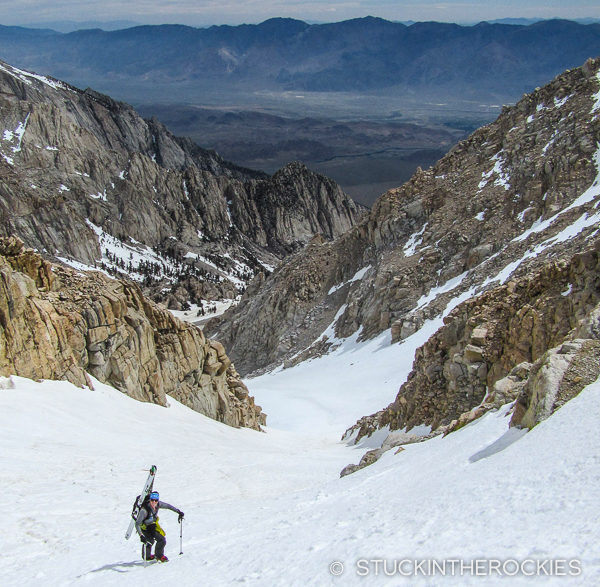
It was a slow grind to the top. But we had time since the snow wasn’t soft yet, and some winds and clouds were slowing down the process.
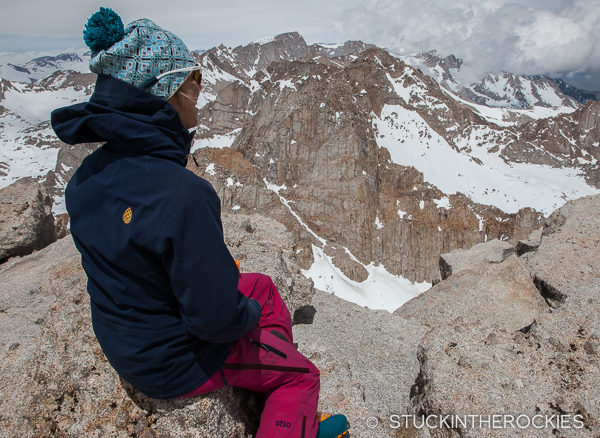
On the summit looking north. Mount Whitney is the tall massif out in the distance.
After the couloir and the final summit pitch, we were standing on a massive summit plateau, with a the actual summit a short distance away. We walked across the flat, talus-strewn summit to the benchmark and took in the view of the range to the north of us. It got us excited for what the rest of our trip might bring. We retraced our route back down the couloir, through the trees, back to our shoes, and down the dry trail all the way down at the desert-like trailhead.
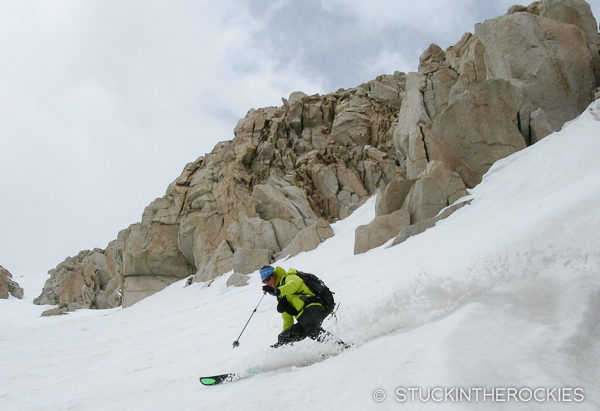
And then it was time to ski.
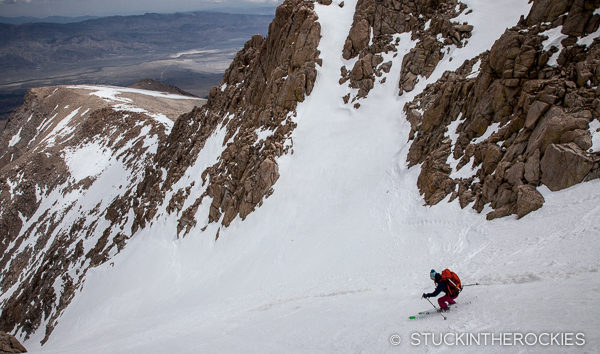
Now being on the descent we were happy the couloir was so long.
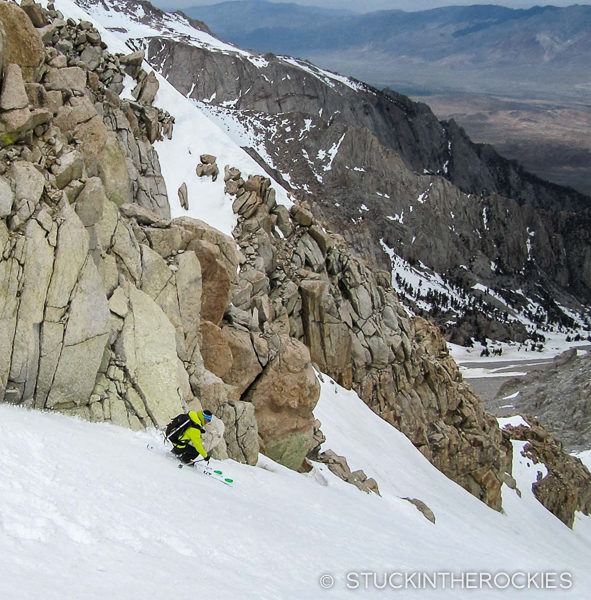
The Owens Valley and the Alabama Hills can be seen way down in the valley below (at about 3,000 feet).
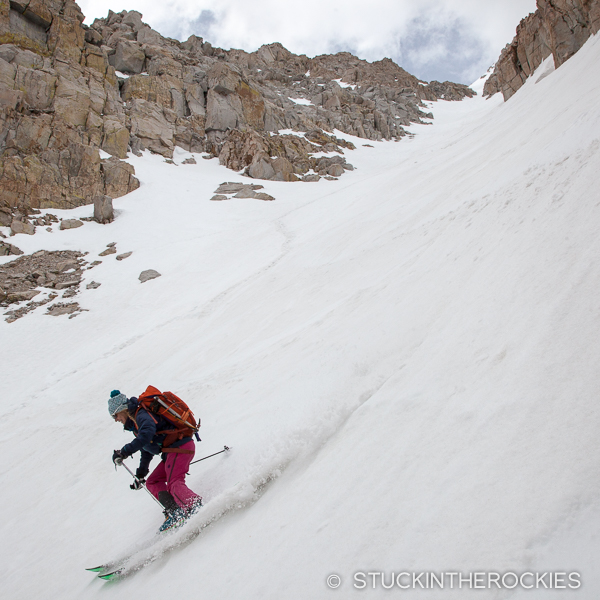
The snow softened more and more as we made our way down.
Mount Langley was a really cool ski. If you’re headed to the Sierras to ski the big peaks definitely put it on your list.
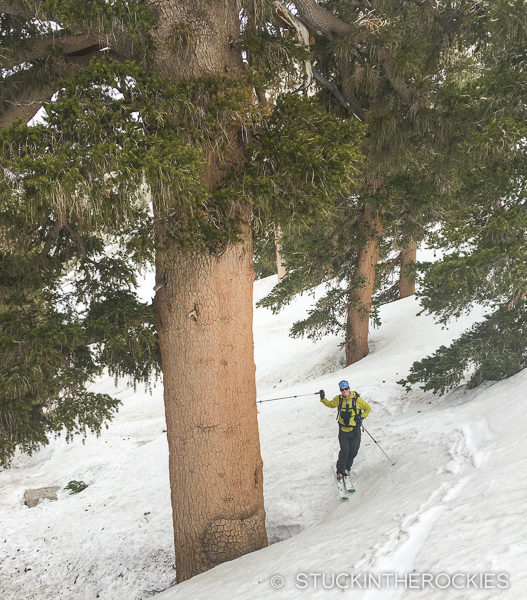
Stopping to measure up against some gigantic limber pines on the way out. They’re huge!

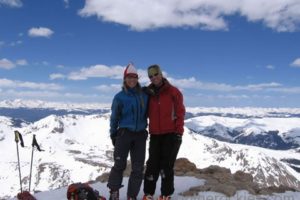
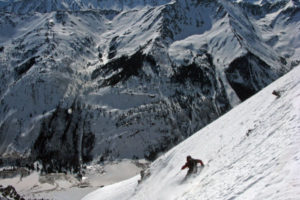
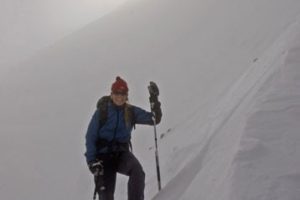
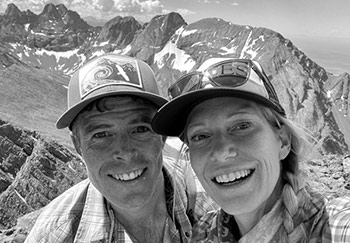






6 Comments
Leave your reply.